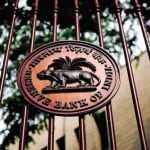
Reserve financial institution of India (RBI) has formulated the ‘Scheme for Sustainable Structuring ofconfused belongings’ (S4A) as an optional framework for the resolution of large burdened money owed.image: Aniruddha Chowdhury/Mint
Mumbai: The Reserve bank of India (RBI) on Monday provided a measure of remedy to banks weighed down through bad loans and their harassed company clients, seeking to sluggish the build-up of sticky loans and, on the same time, ease the pressure on enterprise balance sheets.
Banks might be allowed to convert as much as 1/2 the loans held by corporate borrowers into fairness orfairness-like securities, RBI stated in a assertion.
The flow is intended to help repair the float of credit to important sectors consisting of infrastructure and iron and metal, amongst others, lessen the strain on corporate debtors and stanch awful loans acrossbanks.
Banks will be allowed to transform stressed loans underneath the oversight of an external company, thereby ensuring transparency at the same time as also defensive bankers from undue scrutiny viainvestigative companies.
Loans categorized as non-appearing belongings (NPAs) surged after the central bank performed an asset quality assessment across the banking zone and insisted that banks classify visibly stressed assetsas NPAs.
horrific loans throughout the forty listed banks in India increased to Rs.5.eight trillion as of the cease of March 2016 from Rs.four.38 trillion on the give up of December. Bankers have indicated that this wide variety may additionally upward push in addition over the course of this yr.
This seems to have pushed RBI into creating a good sized allowance for the resolution of confuseddebts.
“The Reserve bank, after due session with lenders, has formulated the ‘Scheme for Sustainable Structuring of pressured assets’ (S4A) as an optional framework for the resolution of large confused accounts,” the regulator stated.
“The S4A envisages dedication of the sustainable debt level for a confused borrower, and bifurcation of thesuper debt into sustainable debt and fairness/quasi-fairness instruments which are anticipated to offerupside to the creditors while the borrower turns round,” it brought.
In simple phrases, a financial institution can determine the quantity of debt that it thinks a firm canprovider with its contemporary cash flows. This proportion of debt need to now not be much less than1/2 the loans or funded liabilities of the organisation.
as soon as the sustainable degree of debt has been decided, banks can convert the rest of the debt intofairness or quasi-fairness units.
To be sure, the scheme comes with a number of caveats.
Banks aren’t allowed to provide any moratorium on reimbursement at the sustainable a part of the debt.they may be also now not allowed to extend the repayment time table or reduce the hobby charge at the debt, which could be corresponding to restructuring of a loan.
The conversion of a part of debt into fairness or equity-like securities could be additionally be ruled by way of a set of valuation criteria laid down with the aid of RBI.
Banks will also want to set aside higher provisions if they pick out to follow this route. lenders will need to make provisions to the quantity of 20% of the total brilliant amount or forty% of the quantity of debtthis is seen as unsustainable.
of these two, the quantity this is higher will same the quantity of provisions that a financial institutionhas to set apart. those provisions are higher than the 15% that banks make for an NPA in the first yearhowever decrease than the one hundred% in provisions required over a three–12 months duration.




